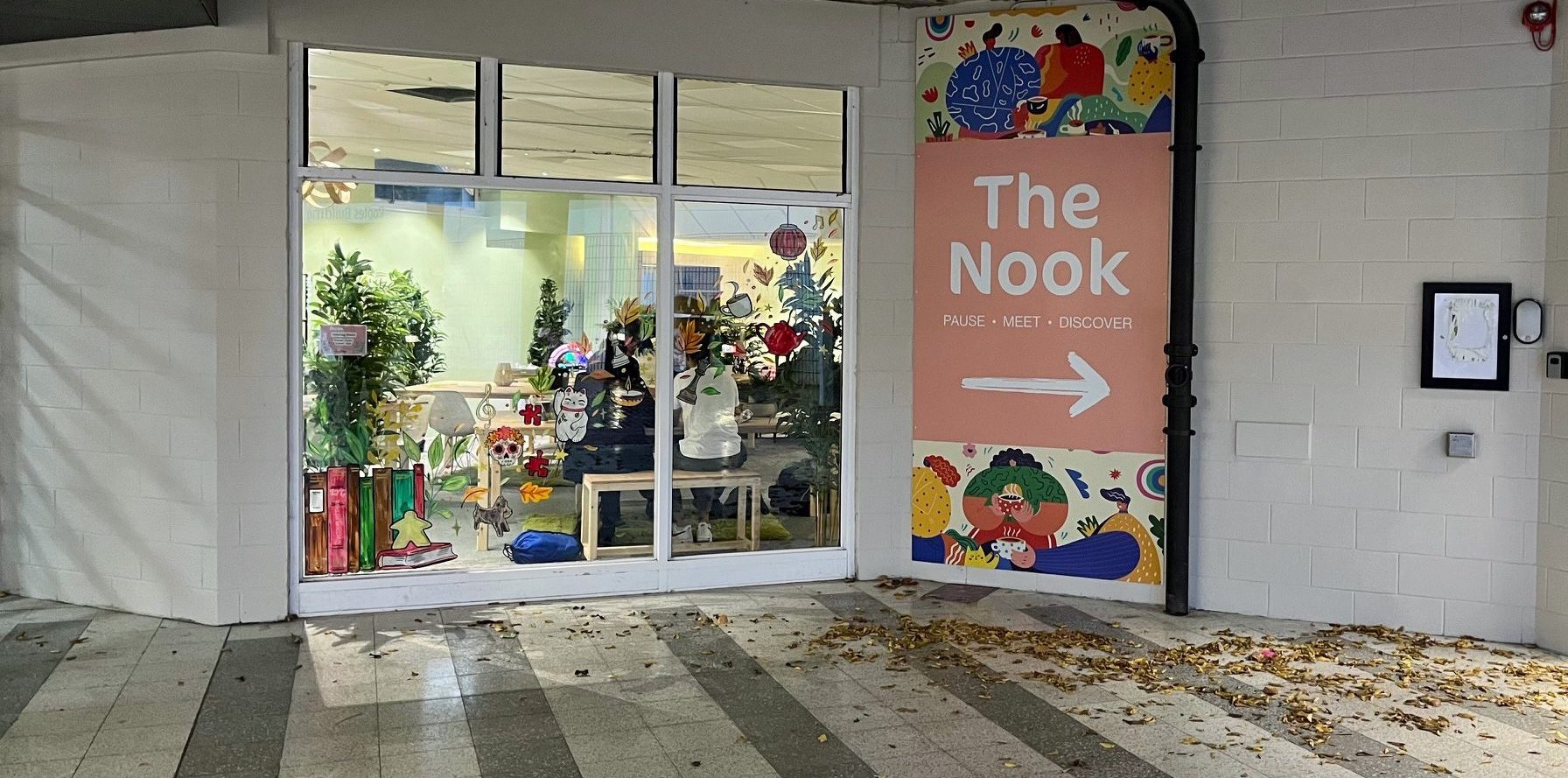Taking a look at the Nook
In an age where universities now compete to be faster, louder, and more interconnected, the University of Warwick has made a much quieter move. Hidden in plain sight, between the drum of Curiositea and the hum of the Rootes Building, the Nook is now open, not as a loud declaration, but a barely noticeable gesture.
More than just another study space, it is a small act of resistance against the assumption that students thrive in a busy environment, overstimulated, overscheduled, and noisy. The Nook offers an alternative.
“It’s not trying to make you do anything or be conscious of anyone,” said a second-year Maths student. “It’s one of the few places on campus where you can just be.”
The official line is that the Nook is “hosted by students for students”. Unofficially, it is a liminal space designed to be neither a bedroom nor a lecture theatre, neither a house party nor a pressure cooker. An ideal place to breathe. To meet others without the responsibility to act a certain way. To discover without an agenda.
The mission of the Nook is clear: to serve the students who don’t show up to bar crawls or Wednesday-night circling
It is important to remember that none of this is accidental. In a time when ‘student wellbeing’ is sprayed across the posters of mindfulness workshops and department hallways, the Nook offers something more thought-out, something more elemental: a physical space for an emotional reality. Its dual purpose of a study zone and a social setting seeks to answer the often-asked but rarely-answered question: where should I go when I don’t want to perform, but still yearn to belong?
“I came and sat here after a really rough seminar,” said one international student. “I didn’t want to go back to my accommodation and talk to anyone. So I just sat… That was enough.”
The mission of the Nook is clear: to serve the students who don’t show up to bar crawls or Wednesday-night circling. To build a bridge between international and home students, not through some kind of forced departmental spectacle, but through an easeful nearness. Through this slow and gentle social architecture, a space that does not insist upon its own purpose emerges.
Naturally, the Nook’s continued existence is not guaranteed. It cannot be kept open by warm lighting and beanbags alone. It must be maintained by its atmosphere, its people, and its continued mission of helping students feel at ease.
There is risk in the Nook’s subtlety. Too quiet, and it is a dusty ghost room. Too noisy and packed, students become alienated by the very place designed to make them feel safer
“It could just become another hang-out spot for students in between lectures,” noted one first-year English student, “and then the space loses its appeal for students who want their own space. But if we keep creating these warm welcomes, it could stay different.”
There is risk in the Nook’s subtlety. Too quiet, and it is a dusty ghost room. Too noisy and packed, students become alienated by the very place designed to make them feel safer. It must remain adaptable, never fixed. Its ethos of “community lounge sessions” and “cultural exchanges” is not proposing solutions, but invitations to take part in something greater.
There could have been other uses of this space. A mentoring area, a staff intercultural hub. But the university chose its most important group. The students. These alternate spaces would have just come with a barrier: bookings, forms, pointless bureaucracy. The Nook demands none of this. It just asks for presence and an open mind.
The Nook must hold its course, staying visible yet not too visible, inviting, yet low-pressure
“Sometimes I come to write. Other times, I come to talk to strangers. Sometimes I do nothing. It becomes my in-between,” said a third-year History student.
I think the University has made a genuinely radical investment. An area that considers the importance of belonging, something hard to locate in such a large student cohort. Not everyone wants to be part of the ever-present campus buzz. Some prefer to slip into it softly, then slip out again.
The Nook must hold its course, staying visible yet not too visible, inviting, yet low-pressure. It may change the story of inclusion on campus. It will do this, and has done this, without colourful campaigns or Instagram stories, but through acknowledgements and half-smiles between strangers.
In the end, I hope the Nook will be a place where students don’t go to be more, but to be enough.

Comments